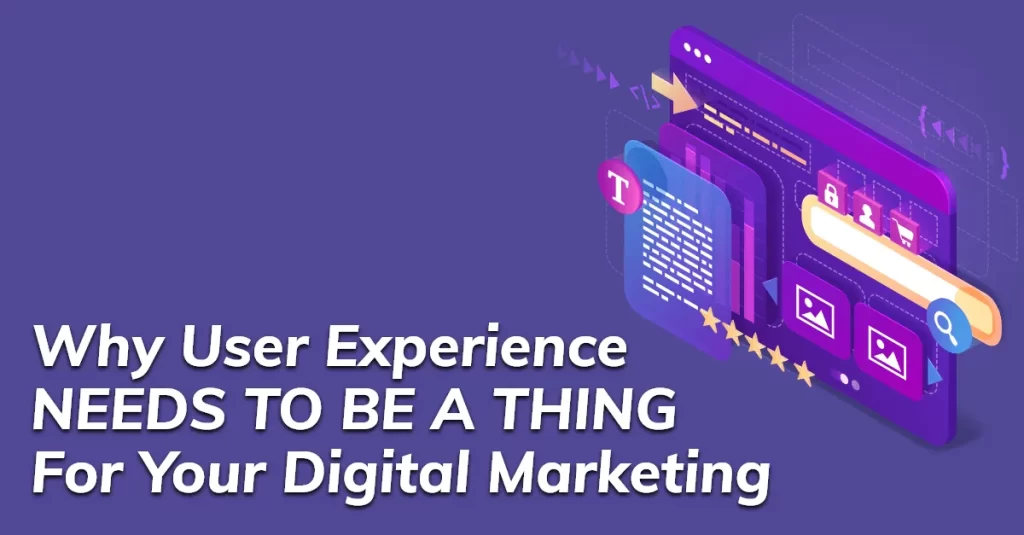Why User Experience Needs To Be A Thing For Your Digital Marketing
When it comes to digital marketing efforts, few things are as crucial as the user experience (UX). If one of your first thoughts was, “Why does the user experience matter in my digital marketing?” you are most likely lucky enough to not have been subjected to poor design (at least not recently). With the accessibility of the internet and the majority of businesses beginning to use more digital marketing, the importance of user experience has exploded. UX Design isn’t something we can ignore.
Why User Experience Matters in Digital Marketing
At face value, user experience sounds like a website design issue. And while web design and user interface are essential aspects of UX, they are not the only parts. User experience relates a lot to psychology. It is figuring out the story behind the problem your customers will come to you with. Once you know your customer’s problem, you can activate user experience principles to guide them to the solution you provide.
User Experience Isn’t All Colors and Lights
Successful businesses see the importance of a quality user experience in relation to their digital branding. It is more than just pretty colors and a well-formatted front page. It is getting to the heart of what your customer is asking of you and making sure you provide what they need.
The 3 Basic Areas of User Experience
1. The User
The most important thing about User Experience is the user (shocking, I know). We must remember the data we are interacting with represents people. When designing a website and analyzing user engagement, we must keep people at the front of our minds. The whole point of creating a website is to have something a customer (read: user) can interact with. Creating the user experience with this in mind will help us empathize with the needs of the people interacting with our products (websites, ads, applications, etc.).
Some questions come up when you focus on the user:
- Can this website be browsed easily in many different locations (dark rooms, sunny days outside, etc.)
- Can it be navigated with one hand on a mobile device?
- Are the answers to their questions easily accessible? Or do they have to dig through too much of your business’ information?
- What do you want them to do?
- Does your website’s structure actually make sense?
2. The Data
After a user interacts with your digital marketing, you usually can glean some information. You can use this information to see where your marketing pain points are. If your website has a high bounce rate, you can begin to make changes to keep people engaged more from their first interaction. Or, if you notice many people are using your product in a particular location, you can make changes to make the experience better.
The point is that whatever data is collected tells a story of how people are interacting with your digital presence. Use the information to improve their overall experience.
3. The Design
When we know who our users are and what they want (through data or otherwise), we can now make decisions to help support digital marketing. This isn’t an easy process, but it is doable. Creating and improving your user experience is a continual cycle of gathering information and using it to improve and adapt. It can be a struggle to know where to begin. This is where some heavy-lifting research comes into play. Also, finding someone to help guide you along the way (*cough* us *cough*) is helpful.
Ultimately, Why Does This Matter?
User experience isn’t something new to the digital age. From the beginning of innovation, user experience has always been at the forefront. If someone designed a super uncomfortable chair, not many people would buy it (unless you slap a limited or luxury tag on it). Something as simple as making sure there was padding where you sit is user experience at its simplest. User experience is always there, making sure things continue to improve for the customer.
Opening a new business starts with seeing a need and building a service you can provide to answer the problem (one way or another). User experience considers the people who will be interacting with your service, product, or website. Giving them a good first impression and a good impression going forward plays a critical role in your success. If you don’t consider good UX design, you risk losing customers to competitors who are taking it seriously.
If you are looking for guidance on UX design, we look forward to connecting with you!



